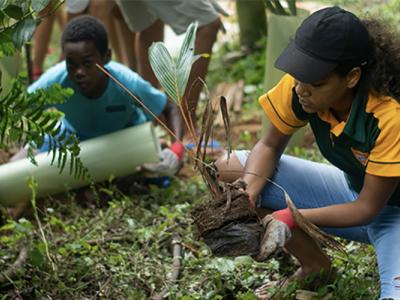Natural habitats and biodiversity, the coastal zone and human settlements, agriculture, water resources, fisheries, human health, natural disasters and insurance are the key socio-economic sectors that were considered for sensitivity and vulnerability to climate change.
Adaptation strategies will require the strengthening of technical and institutional capacity in monitoring and research, as well as the development and implementation of better and appropriate policies for integrated coastal zone management. All stakeholders must be mobilised in the conservation of nature reserves, so that they can play a useful role in the protection of natural habitats and biodiversity under the potential threat of climate change.
Government of Seychelles (2000)
Initial National Communications under the United Nations Framework Convention on Climate Change
Ministry of Environment and Transport, Republic of Seychelles.
The Seychelles consists of 115 islands with a total land area of 455 km2. Forty-one of the islands are granitic and are located within a radius of 50 km from the main granitic island of Mahe, the most populated in the group. The capital, Victoria, is located on Mahe, which has a land area of 148 km2. The remaining 74 islands are coral islands; Aldabra being the furthest located 1,150 km to the southwest of Mahe. The Seychelles has an Exclusive Economic Zone (EEZ) of 1.4 million km2.


